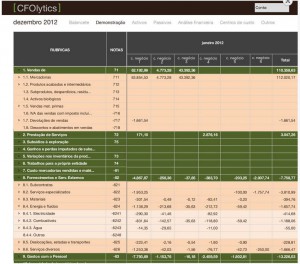
Here is choice of links for this week.
- SQL Server:
- Phil Factor’s Primary Key Primer for SQL Server is an excellent primer on choosing primary keys for SQL Server databases. It also includes links to several related and relevant resources.
- Brent Ozar’s The Secrets of TempDB is a very interesting video on TempDB, one of SQL Server’s system databases. The video covers multiple aspects related to TempDB, presenting its purpose, how SQL Server uses it, how it should be setup and how it can affect SQL Server performance. The post also includes a link to multiple valuable TempDB related resources.
- Jez Schultz Borland’s Filtered Indexes vs. Table Partitioning explains some of differences between filtered indexes and table partitioning and suggests use cases for both. It also includes links to additional resources on both subjects.
- Thomas LaRock’s Doing it Right: Performance Monitoring and Troubleshooting compares tracing and polling as strategies for collection performance metrics in terms of advantages, disadvantages and risks and advises a strategy that includes both, while stating his preference for polling for regular monitoring.
- Brent Ozar’s How to Build a SQL Server Support Matrix presents his version of a SQL Server support matrix and, in a very interesting post, explains how it can be used and some of the advantages that it can bring about.
- Glenn Berry’s General Database Server Build and Deployment Instructions provides a useful build checklist for setting up new SQL Server instances.
- Jack Li’s How Simple Parameterization works addresses query parameterization, explaining how SQL Server versions since 2005 includes two modes of parameterization (simple and forced), how SQL Server behaves in each and how it can be determined whether a given query is being parameterized or not.
- Karen Lopez’s 10 Tips for the Minimalist DBA presents a set of 10 tips about concerns and skills needed for anyone in a DBA role.
- Bill Karwin’s How to Design Indexes, Really, is a very good presentation on index design that, although addressing MySQL indexes, can also be of valued for anyone designing indexes for other database management systems.
- Web Design and Development:
- Kevin Lamping’s Stop Hitting Yourself: CSS Design Patterns That Scale is a very good presentation on using CSS design patterns that can be effectively used on the design of very big websites. It addresses mostly patterns that can be reused, enabling scaling.
- Sergey Bolshchikov’s Ember Reusable Components and Widgets is a video presentation addressing the design of complex user interfaces with the combination of Handlebars templates with Ember.view.
- Anastasios Karafillis’s Efficiently Simplifying Navigation, Part 1: Information Architecture is the first of two articles on simplifying a website’s navigation experience. This article addresses content structuring and navigation options explanation, using labels, pictures and descriptions.
- Craig Buckler’s Easier Ajax With the HTML5 FormData Interface presents, in a simple way, how the HTML5 Ajax FormData interface can be used to simply form handling.
- Caitie McCaffrey’s A WebSocket Primer is a very good primer on using the WebSockets protocol.
- Big Data / BI :
- Seth Proctor’s Do All Roads Lead Back to SQL? addresses “NewSQL” type products and why such products are bringing back SQL – think transactional support and the ability to scale better than traditional RDBMS implementations.
- Ritu Saxena’s 9 NewSQL Databases For OLTP Needs Of Cloud And Web Apps presents 9 NewSQL based database management systems that can be used in OLTP scenarios.
- Buck Woody’s Data Science Laboratory System – Graph Databases provides an introduction to graph databases and provides a quick guide to setting up Neo4j, a graph database.
- Arshad Ali’s Getting Started with Microsoft Power Query for Excel provides an introduction to Microsoft’s Power Query, showing how to install it and starting to use it, with links to further resources on the subject.
- Cloud Computing:
- Courtenay Bernier’s Multi-Factor Authentication… the simple way shows how to setup, enable and use Windows Azure Multi-Factor Authentication.
- Troy Hunt’s Working with 154 million records on Azure Table Storage – the story of “Have I been pwned?” is an excellent and detailed article on how the author used Azure Table Storage to efficiently store and retrieve 154 million email records and how little it costs do to so.
That’s it for this week. Thanks for reading.
